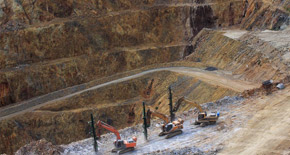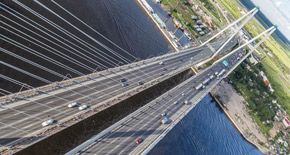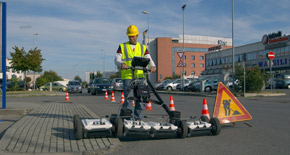SRS SafeRailSystem
Safe railway ballast inspections with ground penetrating radar

SafeRailSystem (SRS) is a fast and non-destructive GPR solution for inspecting railway ballast, it enables you to autonomously inspect railway ballast for renewal and maintenance.
This high-speed radar system (more than 300km/h) is made of three or four antennas and can be easily mounted on any rail carriage or locomotive safe rail system. SRS also offers:
- Continuous mapping of ballast thickness;
- Location of areas with poor bearing capacity (e.g. ballast pockets);
- Differentiation between clean and fouled ballast;
- Detection of drainage problems.
Other features of the system include:
- High speed: The SRS ground penetrating radar for ballast inspection can reach more than 300 km/h with 12 cm scanning steps.
- Dedicated post processing platform: Dedicated post processing software will guide the user through the interpretation of the data and detection of subsurface layers in a semi-automatic way.
- Video camera and GPS: The SRS solution can be integrated with a video camera, GPS and a Doppler radar encoder to provide the exact location of a scan and save time in post processing.
IDS' innovative use of its SafeRailSystem means a reduction in the current cost of under track investigation, maintenance and renewal of ballast. This improvement in the specification of maintenance results in less reworking, a reliable calculation of investments, and an improvement of maintenance quality.
Benefits of SafeRailSystem include:
- Improved track maintenance decision making;
- Increased rail network management profitability due to continuous monitoring;
- Cost reductions in track investigation procedures, maintenance and renewal operations;
- Easy interpretation of ballast status through the use of automatic tools;
- Minimised survey time due to high-speed GPR solution;
SafeRailSystem includes a dedicated post-processing software. The SRS DPA suite for easy and efficient interpretation of SRS data in order to extract the following characteristics of the railway track:
- Continuous mapping of ballast thickness
- Location of areas with insufficient bearing capacity (e.g. ballast pockets)
- Differentiation between clean and fouled ballast
- Detection of sections with drainage problems
This software includes advanced automatic pattern recognition algorithms that assist the evaluation of ballast status and includes an automatic function for layer interface detection.
The operator can simultaneously view up to four parallel radar maps and can view these sections with automatic scrolling. All radar data can be selected in a rapid and efficient way to introduce and analyse drilling information.
SRS-DPA Data Analyser and Reporting
The data analyser and reporting module is integrated in the data processing module and has the following functionalities:
- Layer stratification view for each profile
- Layer interpretation view for each profile
- Layer cross-section view
- Report of layer statistical results for each profile can be output in a text file
- Data view can be saved as an image file (BMP or JPG format file)


























